When it comes to foraging for wild mushrooms, it is crucial to be able to accurately identify different species in order to avoid any potential health risks.
One particular mushroom that has gained popularity in Asian cuisine is the wood ear mushroom, known for its delicate flavor and unique texture.
However, like many edible mushrooms, there are look-alike species that can be easily mistaken for the wood ear mushroom.
In this article, we will explore some of these doppelgängers, highlighting their distinguishing features and providing essential tips on how to differentiate them from the genuine wood ear mushroom.
By familiarizing ourselves with these look-alikes, we can ensure a safe and enjoyable culinary experience while venturing into the realm of wild mushroom picking.
List of Wood ear mushroom look alikes
1. Brown Witches’ Butter (Phaeotremella foliacea)
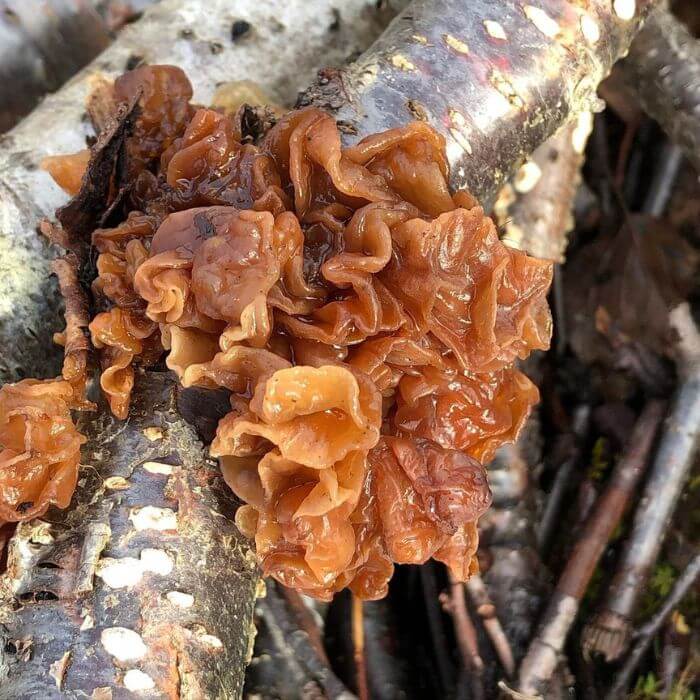
source:sisselsvenning
One of the common wood ear mushroom look-alikes is brown witches’ butter.
Like its look-alike, this brown mushroom has a gelatinous texture and grows on decaying wood, particularly on fallen conifer branches and logs. However, there are some distinguishing features that can help differentiate between the two.
Unlike the wood ear, which typically has a dark brown to black coloration, the brown witches’ butter is usually lighter in color with shades ranging from pale yellow to light brown.
Additionally, while both species have an irregularly shaped cap with wrinkled or folded edges, the cap of wood ear tends to be flatter compared to the more cup-shaped cap of witches’ butter
These subtle differences can be important for accurately identifying wood ear mushrooms and avoiding any potential confusion or misidentification when foraging in the wild.
2. Phaeotremella Frondosa
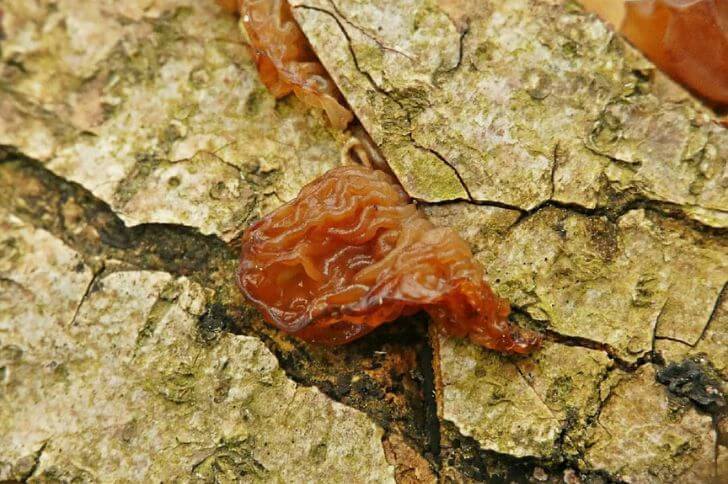
source: tineoenvertical_linares
Another wood ear look-alike is the Phaeotremella frondosa.
This species closely resembles the wood ear mushroom in terms of its appearance and habitat. Like the wood ear, phaeotremella frondosa is also a jelly fungus that can be found on decaying wood, particularly on dead branches and fallen logs in forests.
However, there are a few key differences between these two fungi that can help differentiate them.
While both have a gelatinous texture, phaeotremella frondosa has a more delicate and translucent appearance compared to the darker and thicker flesh of the wood ear mushroom. Another distinguishing factor is their color; while wood ears are typically dark brown or black, phaeotremella frondosa tends to be pale yellow or tan.
3. Amber Jelly Roll (Exidia Recisa)
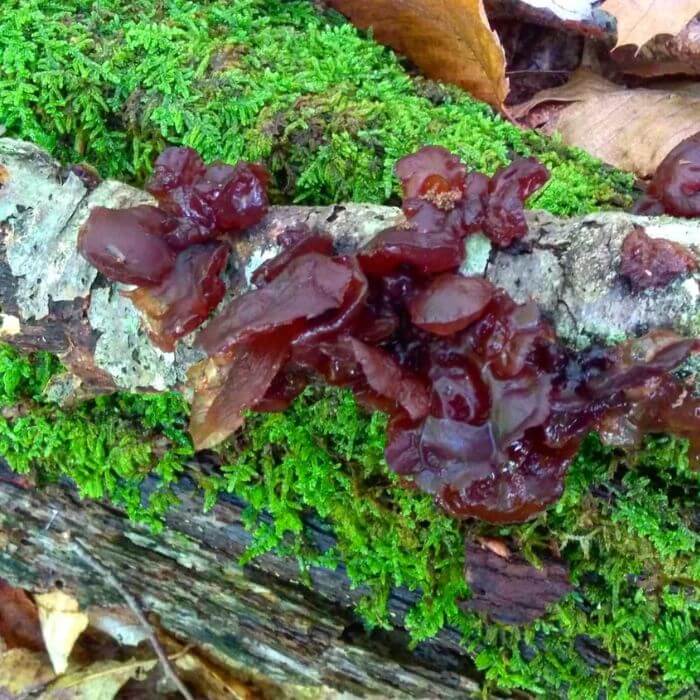
source: the3foragers1
Exidia recisa and wood ear fungus are two types of fungi that share a striking resemblance in appearance, which often leads to confusion among foragers. Both have a gelatinous texture and grow on decaying wood, but there are distinct differences between the two species that set them apart.
One major distinguishing factor is their color. Amber jelly roll, scientific name exidia recisa, is dark brown to black in color and has a velvety texture. On the other hand, wood ear fungus is lighter in color with a smooth surface. This difference in color can be crucial when identifying these fungi in the wild.
Another significant characteristic that sets these two fungi apart is their habitat preference. While both species thrive on decaying wood, amber jelly roll tends to grow predominantly on dead willows and poplars.
4. Exidia Saccharina
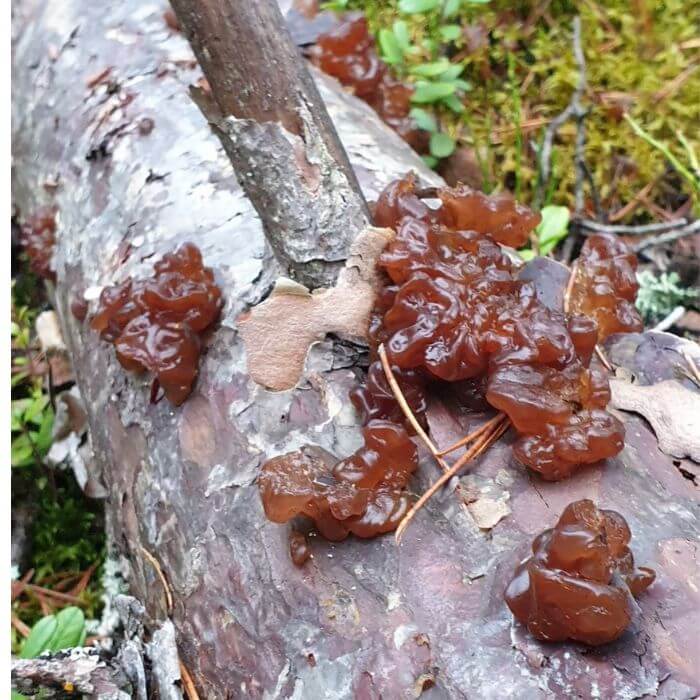
source:luontoilija
Exidia saccharina and wood ear fungus are two varieties of edible fungi that are often used in culinary preparations. While they may seem similar in appearance, there are some notable differences that set them apart.
One key distinction lies in their texture and taste. Exidia saccharina has a gelatinous consistency with a subtle sweet flavor.
On the other hand, wood ear fungus has a chewy and crunchy texture akin to cartilage and a more neutral taste profile. This unique combination of textures makes wood ear fungus an ideal ingredient for stir-fries and soups, while exidia saccharina’s softer texture lends itself well to desserts like jellies or puddings.
Another differentiating factor is their ecological niche. Wood ear fungus can typically be found growing on dead trees or logs, whereas this brown fungus tends to thrive on decaying branches and twigs.
Both species play important roles in the decomposition process of forest ecosystems by breaking down organic matter into nutrients that can be recycled back into the environment.
Related Read: Learn about honey mushroom look alikes
5. Exidia Glandulosa
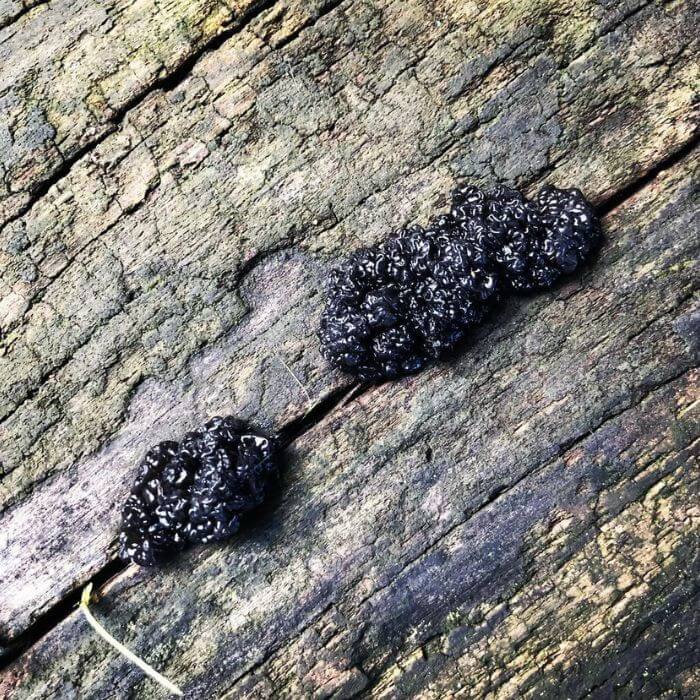
source: gandering_meander
Exidia glandulosa and wood ear fungus are often mistaken for each other due to their similar appearance, but they have distinct characteristics that set them apart.
While both fungi have a dark brown or black coloration and grow on decaying wood, Exidia glandulosa can be distinguished by its jelly-like texture and wavy edges. On the other hand, wood ear fungus has a smoother surface and a more rubbery consistency.
Another important difference between these two fungi lies in their culinary uses. Wood ear fungus is highly regarded in Asian cuisines for its crunchy texture and mild, earthy flavor.
It is commonly used in dishes like hot and sour soup, stir-fries, and various noodle dishes. Exidia glandulosa, however, is not typically sought after for its culinary value as it lacks the desirable taste of wood ear fungus.
6. Witches’ Butter Fungus (Tremella Mesenterica)
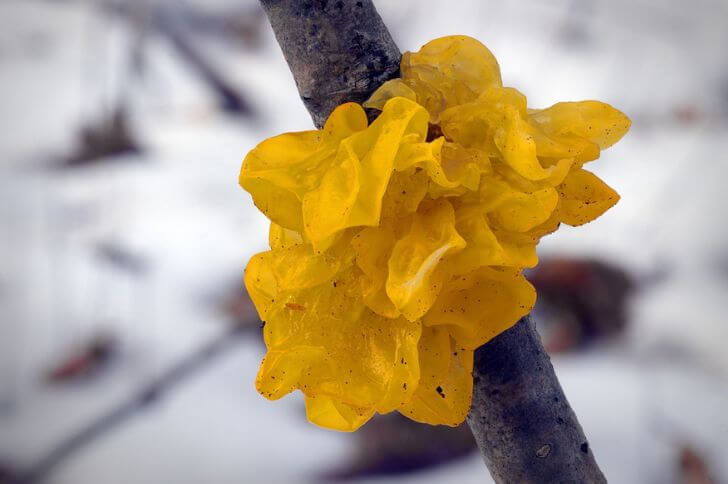
Tremella mesenterica or the witches’ butter is a fascinating species that can be found in many parts of the world. Its bright yellow or orange color and gelatinous texture make it easily distinguishable from the wood ear.
Though they are different in color, these fungi have some similarities. One striking similarity between Tremella mesenterica and wood ear fungus is their gelatinous texture.
When young, both species have a soft and jelly-like consistency that later becomes tougher as they mature. This unique texture enables them to retain moisture and protects them from drying out, allowing them to thrive in humid environments.
Wood ear varieties
Auricularia Heimuer
Auricularia heimuer, also known as black wood ear fungus, is a fascinating variety of edible mushroom. Native to East Asia, particularly China and Japan, this unique mushroom is not only sought after for its culinary uses but also revered for its potential benefits.
Its distinct appearance sets it apart from other mushrooms – with a gelatinous texture and dark color that resembles an earlobe or small umbrella.
Despite its unassuming appearance, Auricularia heimuer packs a punch when it comes to nutrition. What’s more interesting is its high content of polysaccharides known as beta-glucans.
In culinary traditions across East Asia, Auricularia heimuer holds a special place due to its versatile nature.
With a delicate taste reminiscent of wood or earthy notes mingled with slightly bitter undertones, it can be added to soups, stir-fries, salads, or even used as a meat substitute in vegan dishes. Its unique jelly-like texture allows it to absorb flavors readily while adding an intriguing chewiness to any dish.
Hairy Wood Ear
Hairy wood ear is an intriguing fungus that has captured the attention of both culinary enthusiasts and scientists alike. This gelatinous mushroom is instantly recognizable for its unique appearance – a thin, reddish-brown cap that resembles an ear growing on tree trunks or decaying logs.
While it may not be as visually appealing as other gourmet mushrooms, hairy wood ear has gained popularity in Asian cuisines for its delicate texture and subtle flavor.
Wood ear mushroom uses
This rubbery black mushroom is often used to add texture and flavor to dishes such as soups, stir-fries, and salads. However, its uses extend beyond the culinary world.
Recent studies have shown that wood ear fungus has potential benefits due to its rich nutritional content. It is a good source of protein, fiber, vitamins B1 and B2, iron, and calcium.
In addition to its consumption as food, wood ear fungus can also be utilized in skincare products for its moisturizing and anti-aging properties. The extract from this mushroom has natural emollient characteristics that help hydrate the skin and prevent moisture loss.
sources:
Hi There,
My name is Jenny. I’m the Chief Editor at Try Green Recipes and besides making yummy and healthy foods for my kids, grandkids, and friends. I’m new to the blogging world but I believe what I have to share is unique and will bring joy to your home. If you are adventurous and want try something tasty, let’s get started.

